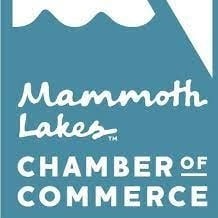By Deb Murphy
Mutual water companies and environmental groups have been waiting a year to find out what their participation in the Owens Valley Groundwater Authority might look like. The question of Associate Members and Interested Parties was on last Thursday’s agenda, but potential members of either category may never get a seat at the table.

Wendy Sugimura
The Joint Powers Authority that set the guidelines for the formation of the Owens Valley basin’s groundwater sustainability agency spelled out participation of groups other than governmental agencies. It was complicated, but gave a voice to groups outside the immediate circle.
Each federally-recognized Tribe would get one seat each with two votes, the one caveat: participating Tribes would have to implement the plan. Federal agencies would get one seat and two votes. Los Angeles Department of Water and Power: one seat, four votes. Mutual water companies: three seats, two votes each. Interested Parties would get four seats at the table with one vote each.
Wendy Sugimura, Mono County’s Community Development Department director, had the daunting task of presenting options to the OVGA Board.
She pointed out the maximum participation spelled out in the JPA would add 13 members to the existing 11-members raising the question of the cumbersomeness of a 24-seat board.
Sugimura presented a range of alternatives that would reduce voting participation by both Associates and Interested Parties. In one alternative, advisory committees would provide input on specific issues with no voting power and the Board would stay at the current 11.
Then things got gnarly.
“It looks like you’re asking for a change to the JPA,” April Zrelack said.
Phil Anaya pointed out the promises of additional representation made at Inyo Board of Supervisors’ meeting. During the round of outreach by consultants, the Owens Valley Committee “was almost promised representation,” Mary Roper pointed out.
Later in the discussion Mono Supervisor and OVGA Chair Fred Stump accused Roper and the OVC of “myopic fixation with Fish Slough at an early outreach meeting.” Roper had no idea what he was talking about.
During the lengthy discussion, Stump said he “was obligated to protect the farmers” in Tri-Valley and that Inyo wrote the JPA with no input from Mono. Anaya responded, “Mono still signed it.”
Dave Tanksley, representing mutual water companies, had an interesting take on advisory committees. “That’s where you put squeaky wheels to keep them busy,” he said.
The Board was split. Inyo Supervisor Dan Totheroh reminded the board how, over a short period of time, the chaos of 11 members settled down. He understood fear over the potential size, but “the Interested Parties and Associates should be represented.”
There was discussion about additional members’ requirement to contribute funding. Why should they get a seat at the table when they have no skin in the game was the argument. During the Mono Supervisors’ meeting, late last year, Stump urged the County to pick up the tab for Wheeler Crest CSD and Tri-Valley Groundwater Management District. The Board approved that motion.
Three of the existing seats are occupied by entities that opted to reduce their voting power from four to two and not pay into the cost of developing a Groundwater Sustainability Plan, a cost that will largely be covered by a $713,000 grant with reimbursements back to the paying agencies. As for the cost of implementing the eventual plan, Anaya said everyone assumed that cost would be covered by an increase in property taxes.
When a tally was taken, based on voting power, the additional representation faction held a slim margin.
Bishop City Councilmember Chris Costello came up with a logical solution—get a firm idea of how many Associates and Interested Parties wanted to participate and go from there. Maybe the fear of an unwieldy board was misplaced.
Vote was taken and everyone agreed.
Discover more from Sierra Wave: Eastern Sierra News - The Community's News
Subscribe to get the latest posts sent to your email.





















Every domestic user of water, every commercial user of water, every visitor, we all depend on groundwater in the Owens Basin. In recognition of that fact, a consistent quantity and quality needs to be provided for. It is now the responsibility of the Owens Valley Groundwater Authority, (OVGA) acting as the singular Groundwater Sustainability Agency (GSA) for the Owens Basin to insure that our water supply becomes sustainable even with climate change, even with the LADWP exporting a considerable amount of the Owens Basin waters to Los Angeles.
The process of the OVGA to manage our groundwaters is defined by the Sustainable Groundwater Management Act (SGMA) and the Groundwater Sustainability Plan, (GSP) that the OVGA will create through its newly hired consultant D.B. Stephens and Associates. The OVGA through the Inyo County Water Department and Bob Harrington it’s Director has applied and received the cost of the GSP formation from the State and there will be opportunity to receive additional dollars from the State for the implementation of the Plan.
The current Authority membership is made up of entities that were initially, each eligible to create a GSA. These GSA’s would then fashion their own GSP’s that would then need to reconciled with the other GSP’s in the Basin and with the State of California Department of Water Resources (DWR).
The OVGA is the result of all of the eligible agencies coming together to unify the process by creating the OVGA and a singular GSP for the Basin. While this has been a great work and a benefit to the Basin process, the Authority so far as failed to include a broader representation of the groundwater users in the Basin. This has left the so called “ineligible” entities without a seat at the Table, those being Tribes, Mutual Water Companies, Federal Agencies and the LADWP (defined in Article V in the OVGA Joint Powers Agreement (JPA) as possible “Associate Members”) . There is also provision in the JPA for the inclusion of “Interested Parties” that would include environmental groups and others. The first paragraph of Article 5, 1, 1.1 (Associates and Interested Parties) of the JPA states, ” It is the intention to include certain entities…….in the sustainable management of groundwater within the Basin”. The entire membership of the Authority has signed and is committed to the provisions of the document. The process of the inclusion, the number of new members, their vote assignment, their obligations to join the Authority is clearly addressed in the JPA.
Public participation is both encouraged and required by SGMA. The OVGA has met the standards and more . Public participation at the meetings has been robust due to interest and due to the fine job of inclusion of the public comments from the Chair of the Authority. However public participation and inclusion of the entities as defined in Article V of the JPA are two separate issues. The OVGA has been lax however in the inclusion of the Associate and Interested Parties on the Board. This issue being discussed at this last meeting was a long time coming and most importantly many of the formative issues of the Authority (such as the choice of the consultant) have been decided without the inclusion and voice of these parties that represent many users in the Basin. Far worse is that decisions made so far have not benefitted from the pool of greater knowledge and experience dealing with the issues of sustainability in the Basin that Associate and Interested Parties would bring to the table. The founding Fathers of our Nation began with 13 Colonies yet today we have 50 States. It is not about a manageable number at the table. It is about adequate representation, unity and empowerment to the purpose and the process to achieve a sustainable water management in the Owens Basin to the advantage of the Basin and multiple millions that depend on the waters of the Eastern Sierra.
Limited but basic information regarding the OVGA is available at the Inyo County Water Department under the heading of SGMA.